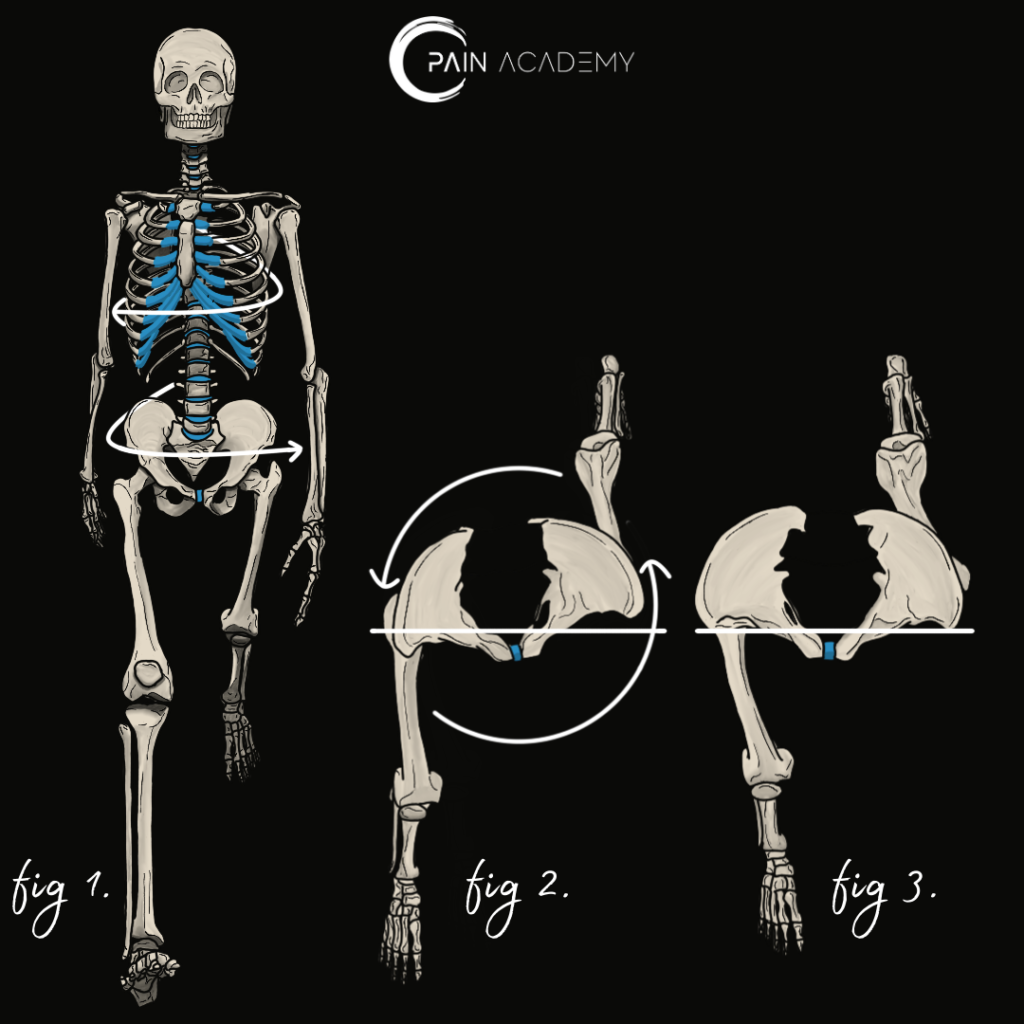
At any given moment, we are controlling more than a dozen angular positions without even being aware of it.
When we step forward with our right leg, the right pelvis rotates forward in the same direction (fig. 2).
Rotating our pelvis like this helps us lengthen our stride allowing us cover more ground with less energy spent as well as evenly distributing work to our muscles.
Without this rotation, forward movement would only come from the flexion/extension of our hips which would excessively stress our hip muscles and increase impact force (fig 3).
To keep us stable when the pelvis rotates in the direction we are stepping, our ribcage counter-rotates the opposite way as the left arm swings forward.
Our upper body’s ability to counter-rotate helps to lower impact forces and lowers energy expenditure when moving. [1]
Now where things get problematic is when one (or both) hips can’t flex, extend, or rotate.
A hip imbalance at rest will affect how the pelvis rotates through motion.
Instead of rotating back and forth evenly around a vertical axis, one side of the pelvis will rotate forwards or backwards more than the other.
This will place extra demand on some muscles (it’s a toss up between which 600+ muscles the body will call upon to help compensate for this) while others are barely used.
If there is a problem in the hips and pelvis, it’s now about what the upper body has to do to offset that problem.
Either one arm will swing more or less.
One shoulder will elevate or drop.
The upper body might stay rotated in one direction, or will entirely offset and shift to the side to counter the hip/pelvis disparity.
Yesterday on our Sunday Self-Care session for members, I asked everyone to walk around before and after the rebalancing sequence we did as a group, then share what they noticed changed.
Many of them noticed a smoother stride, easier time walking, more support, “feeling grounded”, and overall walking with more comfort because their hip imbalance relaxed, hip function improved, their pelvis could rotate more evenly around a vertical axis, and their upper body wasn’t stuck compensating for a hip imbalance.
[1] Uchida, T. K., Delp, S., & Delp, D. B. (2020). Biomechanics of movement: The science of sports, robotics, and rehabilitation. Cambridge, MA: The MIT Press.